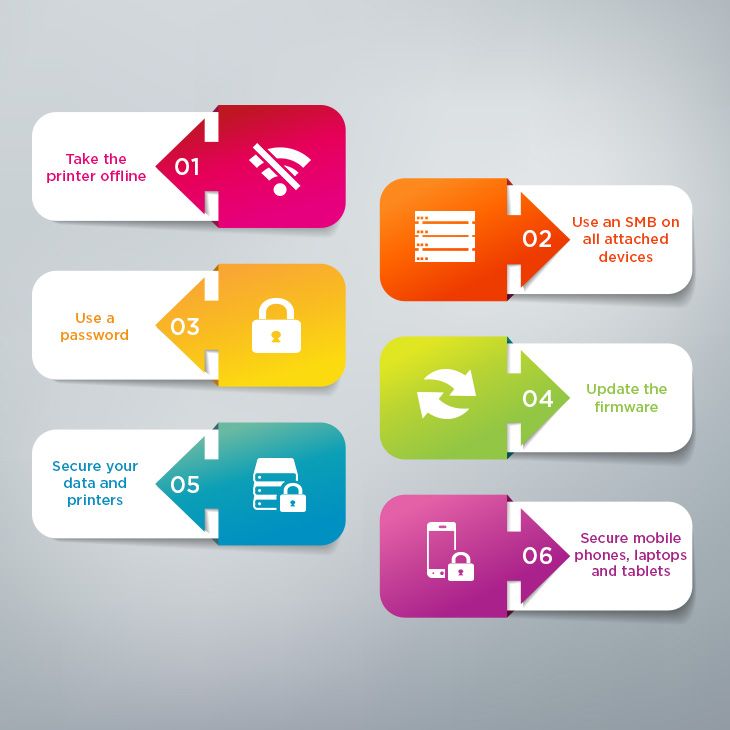Six steps to secure your printers
When printing copies of documents, it’s often forgotten that many printers today are online and may not be secure. The last thing you want is for an outside party to have access to private documents, so how can you pick a secure printer? Most online printers have security features available, but they may be overlooked. If security features are unavailable, there are other steps you can take to secure your printer(s):

1. Take the printer offline
If you have a printer without built-in security features, the safest way to use it is to take it offline and use USB sticks to print documents. This can be a radical step and you won’t be able to work or edit documents from home or on a tablet or smartphone. It’s not the best method, but for some printers it may be the only option.
2. Use an SMB on all attached devices
SMB stands for Server Message Block protocol. Having a good SMB on all office computers and employee computers or smartphones will help secure the devices. However, hackers have found ways to get around some SMBs.
3. Use a password
Most online printers are password protected. However, having a generic password will not make the device secure. Choose a password with letters, numbers and symbols, and change the password regularly. A determined hacker can find simple passwords and hack into a printer. Don’t make your password the company name, as that will be the first thing a hacker will try.
4. Update the firmware
Firmware protects against hacking. Most manufacturers update their firmware regularly as new methods of hacking are discovered. Whenever firmware is updated, install it on the printer. It will help keep the printer safe from hackers.
5. Secure your data and printers
You can secure your data by using encryption software. If a hacker does access your documents, encryption will give them garbled data and they won’t be able to use the data against your company.
Printers are best secured by frequent password changes, but be sure to limit the number of people who have access to the current password. Only employees who need to use the printer should have the password.
Another tip is to regularly erase old documents from the hard drive. If a hacker does compromise the printer, they will be able to view the hard drive and have access to all the printed work. Some of the work might be sensitive in nature, and you don’t want an outside party to have access to it.
6. Secure your mobile phones, laptops, and tablets
Mobile phones, laptops and tablets will all have access to the printer. They should be secured using two methods. Anyone with access to company data should make their mobile phone, laptop, or tablet inaccessible to outsiders by having a secure password. No one can gain access to their computer if they don’t know their password.
Secondly, access to the printer should be secured by having a separate password to open the printer portal. Even if someone gains access to a remote device, they won’t get access to the printer without knowing the additional password.
Taking precautions to secure your printer is well worth the minimal effort required. It is vitally important to the security of your business, and every necessary step should be taken to ensure outside parties do not have access to information on your printer. Talk to our security expert to learn more about printer security best practices.